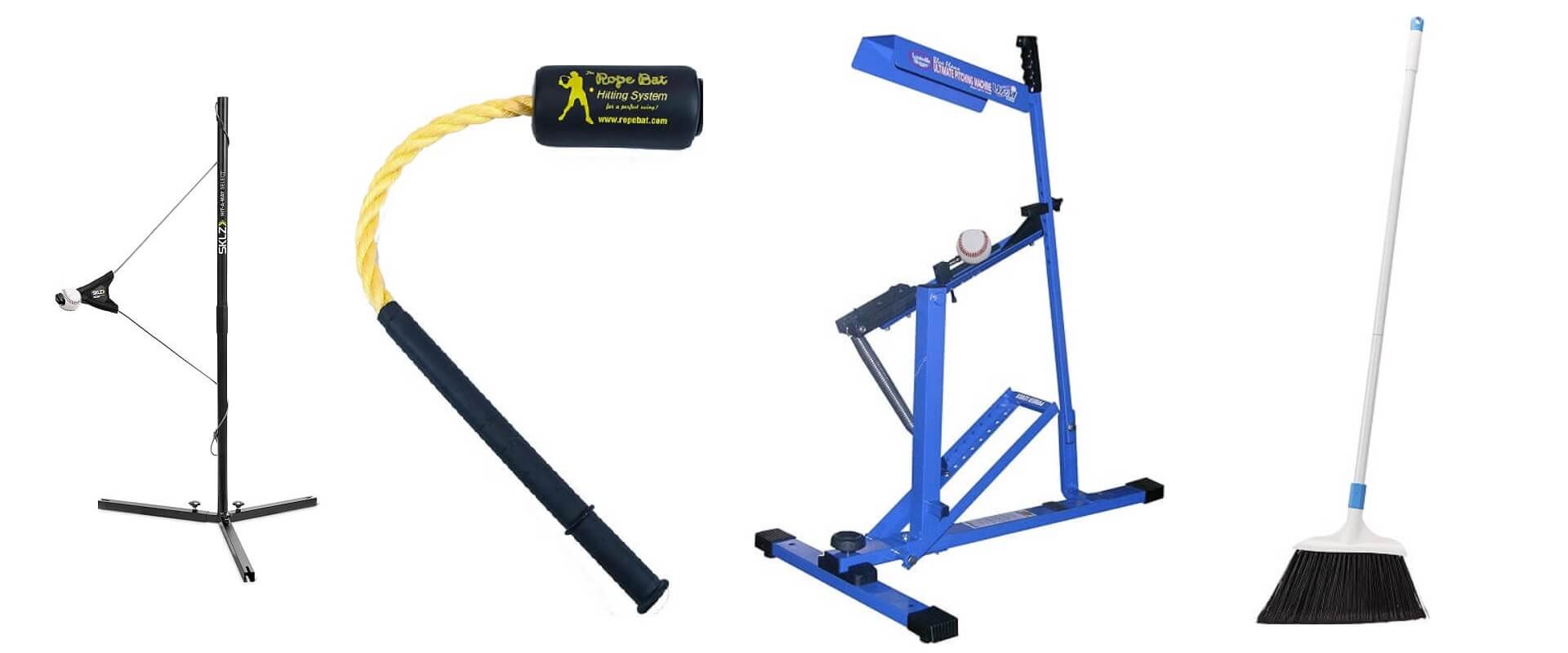These are the 11 best baseball hitting/swing trainers (2024)
by Fred Hofstetter on January 22, 2024Find the perfect batting swing training aids for yourself or your team. Get better at hitting and have more fun playing baseball.
Learning to hit and bettering yourself requires more than dropping a bunch of money on expensive hitting trainers. There’s really no replacement for an active, knowledgeable coach capable of addressing your technique and providing feedback in real-time. But practice isn’t over when practice ends. Establishing muscle memory is key to cementing new habits, and there are many tools you can use to help yourself on that end. Here’s a handful of some of the best hitting training aids you’ll find, which can all be used in the smallest of backyards (or in some cases, even indoors).
1. SKLZ Hit-A-Way
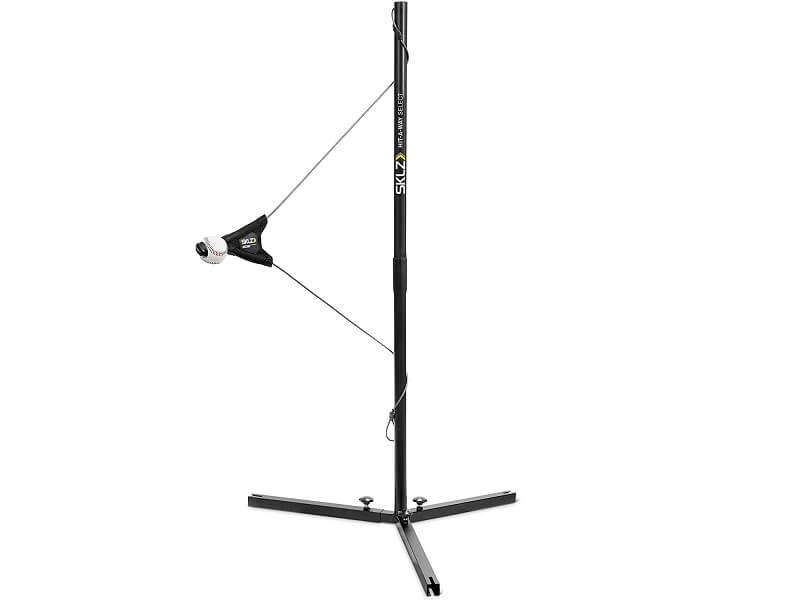 The classic swing trainer. The Hit-A-Way is a tried-and-true way to get good reps in your backyard. Fit the Hit-A-Way to a pole or included stand and get started by pushing it to wrap around the pole. As the cord unwinds the fixed ball will find a predictable horizontal plane. Wait until the ball extends into the hitting zone and take a hack. The Hit-A-Way is a great tool to get a lot of reps in a short amount of time. Or to get a quick warmup. This won’t help you polish your form or give you a ton of feedback on the quality of your swings—but you can feel when you’re connecting. When the cord shivers and doesn’t wrap tightly after you make contact, you know something didn’t go right. You can buy this a few different ways. You don’t need to buy the full package with the stand/pole. Grab the ball and cord only and you can wrap it around the basketball hoop, a tree, or any other kind of pole you have in the yard. A good homemade DIY hack might be pounding a spare or cheap length of PVC into the ground (or affix in some other way).
The classic swing trainer. The Hit-A-Way is a tried-and-true way to get good reps in your backyard. Fit the Hit-A-Way to a pole or included stand and get started by pushing it to wrap around the pole. As the cord unwinds the fixed ball will find a predictable horizontal plane. Wait until the ball extends into the hitting zone and take a hack. The Hit-A-Way is a great tool to get a lot of reps in a short amount of time. Or to get a quick warmup. This won’t help you polish your form or give you a ton of feedback on the quality of your swings—but you can feel when you’re connecting. When the cord shivers and doesn’t wrap tightly after you make contact, you know something didn’t go right. You can buy this a few different ways. You don’t need to buy the full package with the stand/pole. Grab the ball and cord only and you can wrap it around the basketball hoop, a tree, or any other kind of pole you have in the yard. A good homemade DIY hack might be pounding a spare or cheap length of PVC into the ground (or affix in some other way).
Summary, with pros and cons:
- Pretty low price if you skip the stand/pole.
- Quick set up and very portable so you can squeeze in reps anytime.
- Feedback is limited; no ball flight.
- No ball flight is also a pro! You won’t break any windows.
- Not a natural way to track the ball as a hitter: focus your eyes at the point of contact.
2. SKLZ Portable Batting and Swing Trainer – Hurricane Category 4
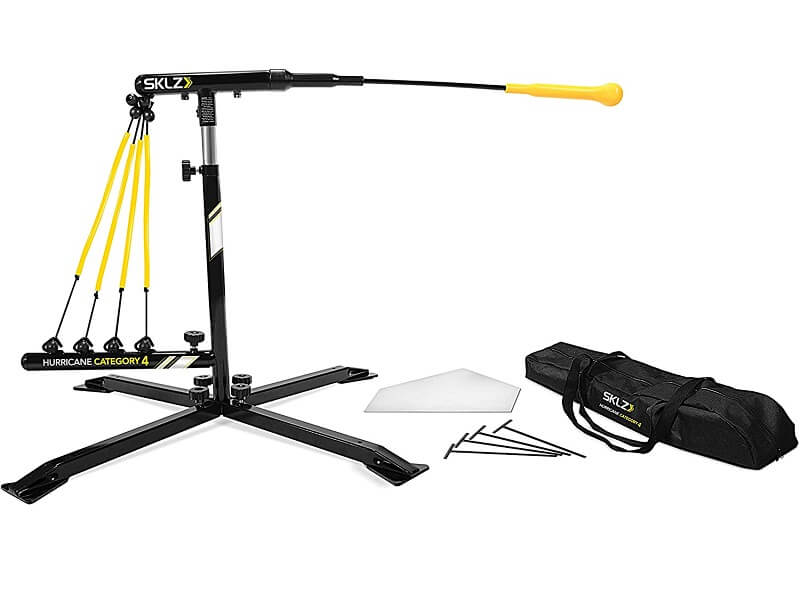 At first glance this tool looks similar to the Hit-A-Way, but there are a few key differences that give this one a bit more utility as a training device—rather than simply means to get a few reps. The ball remains still at the point of contact. There’s no hurry here. Get yourself set up right. Get comfortable. Take a deep breath, then give it your best hack. The design allows for decent feedback on the quality of your contact. Flush it and you’ll see a satisfying smooth whipping with a quick, clean rebound into the hitting zone. If the ball and pole flops around you’ll know you missed the mark. There’s enough give that it’s evident when you fail to center it. Important: you might be tempted to use this like a Hit-A-Way and take repeated swings as the ball swings back. I wouldn’t recommend taking “timed” swings like the Hit-A-Way in which you swing as the ball is moving. Once you’ve taken a swing and the ball rebounds, wait for the ball to fully stop again before taking the next swing. You can wear out the bands really quickly when you use this like a “moving pitch” simulator—plus, there’s no reason to swing back-to-back so vigorously anyway.
At first glance this tool looks similar to the Hit-A-Way, but there are a few key differences that give this one a bit more utility as a training device—rather than simply means to get a few reps. The ball remains still at the point of contact. There’s no hurry here. Get yourself set up right. Get comfortable. Take a deep breath, then give it your best hack. The design allows for decent feedback on the quality of your contact. Flush it and you’ll see a satisfying smooth whipping with a quick, clean rebound into the hitting zone. If the ball and pole flops around you’ll know you missed the mark. There’s enough give that it’s evident when you fail to center it. Important: you might be tempted to use this like a Hit-A-Way and take repeated swings as the ball swings back. I wouldn’t recommend taking “timed” swings like the Hit-A-Way in which you swing as the ball is moving. Once you’ve taken a swing and the ball rebounds, wait for the ball to fully stop again before taking the next swing. You can wear out the bands really quickly when you use this like a “moving pitch” simulator—plus, there’s no reason to swing back-to-back so vigorously anyway.
Summary, with pros and cons:
- As I write, this batting trainer is $200.
- The ball stays attached – no net needed, no chasing around base, soft, or wiffle balls.
- No unnatural eye tracking; keep your eye on the ball, just like you normally would at the point of contact.
- A bit more easily adjustable than the Hit-A-Way.
- A heck of a lot better than a tee.
- Very durable – bungees designed to last for years (if you use it right).
3. SKLZ Hitting Stick Batting Swing Trainer
 If you’re not all that enthusiastic about dropping 200 bucks on a swing trainer, you might be more interested in something like this hitting stick, also from SKLZ. As I write you can pick this up for 40 bucks. This trainer really requires a coach—or at least an active participant willing to hold the stick for the batter. All coach needs to do is grip firmly and hold the ball steady. Keep the grip light enough so the ball reacts naturally to contact and provides clear feedback to both the hitter and holder. The primary benefit of the hitting stick is being able to participate in real-time as a coach (without having to throw precise pitches) in a very predictable, repeatable drill. With some other trainers you might not have as much control and the hitter can get distracted. This tool allows you to drive the training and provide real-time feedback young hitters really need to develop the right technique. Left entirely to their own devices they might wind up building bad habits without realizing it. You’ll likely use this trainer for youth players, but there’s no reason you can’t use this for older kids or adults.
If you’re not all that enthusiastic about dropping 200 bucks on a swing trainer, you might be more interested in something like this hitting stick, also from SKLZ. As I write you can pick this up for 40 bucks. This trainer really requires a coach—or at least an active participant willing to hold the stick for the batter. All coach needs to do is grip firmly and hold the ball steady. Keep the grip light enough so the ball reacts naturally to contact and provides clear feedback to both the hitter and holder. The primary benefit of the hitting stick is being able to participate in real-time as a coach (without having to throw precise pitches) in a very predictable, repeatable drill. With some other trainers you might not have as much control and the hitter can get distracted. This tool allows you to drive the training and provide real-time feedback young hitters really need to develop the right technique. Left entirely to their own devices they might wind up building bad habits without realizing it. You’ll likely use this trainer for youth players, but there’s no reason you can’t use this for older kids or adults.
Summary, with pros and cons:
- Great for one-on-one training with a coach.
- Much less expensive than alternative batting trainers.
- Very versatile: change inside/outside or high/low instantly without having to stop and adjust a tool
- No net needed, no windows broken.
- A great choice for youth players who probably shouldn’t be left to too much unsupervised training.
4. The Rope Bat
 Many of the previously listed items on this list work as excellent tools for getting reps and instilling muscle memory after making your last tweak. The Rope Bat, on the other hand, is designed to train certain aspects of your swing. Use a Rope Bat to root out a few bad habits. Primarily, casting: when your arms jump out before your body and stab at the ball. You can’t cast when you’re swinging the rope bat. Try stabbing and you’ll have a lot of trouble flushing it. You’re forced to swing with your body and clear your hips/shoulders, allowing your arms to follow through naturally to create lag as your lower body provides the power. The word everyone uses when they speak about the rope bat is “feel.” When you lose the feel of your swing this tool is a great way to get that feel back and recall how swinging a bat should feel. Take 6-8 swings with the rope bat, then take 6-8 with a regular bat, using a tool like the Hit-A-Way to get better reps and get the right feel.
Many of the previously listed items on this list work as excellent tools for getting reps and instilling muscle memory after making your last tweak. The Rope Bat, on the other hand, is designed to train certain aspects of your swing. Use a Rope Bat to root out a few bad habits. Primarily, casting: when your arms jump out before your body and stab at the ball. You can’t cast when you’re swinging the rope bat. Try stabbing and you’ll have a lot of trouble flushing it. You’re forced to swing with your body and clear your hips/shoulders, allowing your arms to follow through naturally to create lag as your lower body provides the power. The word everyone uses when they speak about the rope bat is “feel.” When you lose the feel of your swing this tool is a great way to get that feel back and recall how swinging a bat should feel. Take 6-8 swings with the rope bat, then take 6-8 with a regular bat, using a tool like the Hit-A-Way to get better reps and get the right feel.
Summary, with pros and cons:
- Emphasizes correct weight shift and generating from the lower body/core.
- On the expensive side given its simplicity.
- Pairs well with a Hit-A-Way or other rebounding tee.
- Must be used at full speed, so no half measures: you can’t learn muscle memory at half speed.
- Great tool for all ages, including both youth and adults.
5. Momentus Speed Hitter Baseball MAX
 While plenty of coaches and players will swear by the Rope Bat, a great alternative at a lower price (as of writing) is the Speed Hitter. This tool also emphasizes lag like the Rope Bat—but does it without make you flop a rope around your torso. You might not be a fan of that. The Speed Hitter looks like a very thin bat on which a baseball or softball is mounted, floating freely along the shaft as you swing. The idea is to have the ball slide out to the end of the bat right at the point of contact with a satisfying *snap*. Like the Rope Bat, you aren’t going to get good results if you’re casting or if your timing is all out of whack. One big benefit of this tool is you don’t need a tee and there are no balls flying all over the place. You might even have space to practice in your own bedroom. You do lose some precision in that you aren’t tracking a ball to meet to meet the barrel. But with the Speed Hitter you can completely focus on the timing of your load and release.
While plenty of coaches and players will swear by the Rope Bat, a great alternative at a lower price (as of writing) is the Speed Hitter. This tool also emphasizes lag like the Rope Bat—but does it without make you flop a rope around your torso. You might not be a fan of that. The Speed Hitter looks like a very thin bat on which a baseball or softball is mounted, floating freely along the shaft as you swing. The idea is to have the ball slide out to the end of the bat right at the point of contact with a satisfying *snap*. Like the Rope Bat, you aren’t going to get good results if you’re casting or if your timing is all out of whack. One big benefit of this tool is you don’t need a tee and there are no balls flying all over the place. You might even have space to practice in your own bedroom. You do lose some precision in that you aren’t tracking a ball to meet to meet the barrel. But with the Speed Hitter you can completely focus on the timing of your load and release.
Summary, with pros and cons:
- Can’t be beat in terms of portability/usability in all environments
- Won’t help you with hand/eye coordination, but focuses entirely on timing and feel
- Great way to warm up before a game or even in the on-deck circle
- It’s not cheap, but it’s more affordable than other similar tools on the market
6. Line Drive Pro
 Chalk up another in the “create lag” column. Here’s another tool training you to focus on the point of contact. In this case the ball does not stay attached to the bat. The ball’s trajectory and speed is based on how you swing the bat. So you’ll get immediate, real feedback you wouldn’t get from something like the Speed Hitter. You’ll strap the lightweight plastic Line Drive Pro right to the barrel of your bat and load up a foam ball (don’t use a real one). Take a swing and gauge how the ball responds. Take a compact, inside-out swing and you’ll be rewarded with a launched line drive. Cast away with your arms and you’ll get an unsatisfying thud. The drawback is the ball comes out, which means you’ll have to go chase after it. You’ll want a big hitting net to catch balls, especially in smaller backyards. This tool represents another way to create lag and sync up all the moving parts in your swing. The good news here is it’s much less expensive than the Speed Hitter or Rope Bat – though your mileage may vary.
Chalk up another in the “create lag” column. Here’s another tool training you to focus on the point of contact. In this case the ball does not stay attached to the bat. The ball’s trajectory and speed is based on how you swing the bat. So you’ll get immediate, real feedback you wouldn’t get from something like the Speed Hitter. You’ll strap the lightweight plastic Line Drive Pro right to the barrel of your bat and load up a foam ball (don’t use a real one). Take a swing and gauge how the ball responds. Take a compact, inside-out swing and you’ll be rewarded with a launched line drive. Cast away with your arms and you’ll get an unsatisfying thud. The drawback is the ball comes out, which means you’ll have to go chase after it. You’ll want a big hitting net to catch balls, especially in smaller backyards. This tool represents another way to create lag and sync up all the moving parts in your swing. The good news here is it’s much less expensive than the Speed Hitter or Rope Bat – though your mileage may vary.
Summary, with pros and cons:
- Even more cost-effective than the Rope Bat or Speed Hitter.
- Better for price, but be wary of durability, especially with the Velcro straps – some user reviews aren’t so flattering. Might be best for youth players vs. adults with higher bat speeds.
- You’ll need a net to catch balls shooting out of the socket.
- Very clear visual feedback on the quality of your swing.
7. Louisville Slugger Blue Flame Pitching Machine
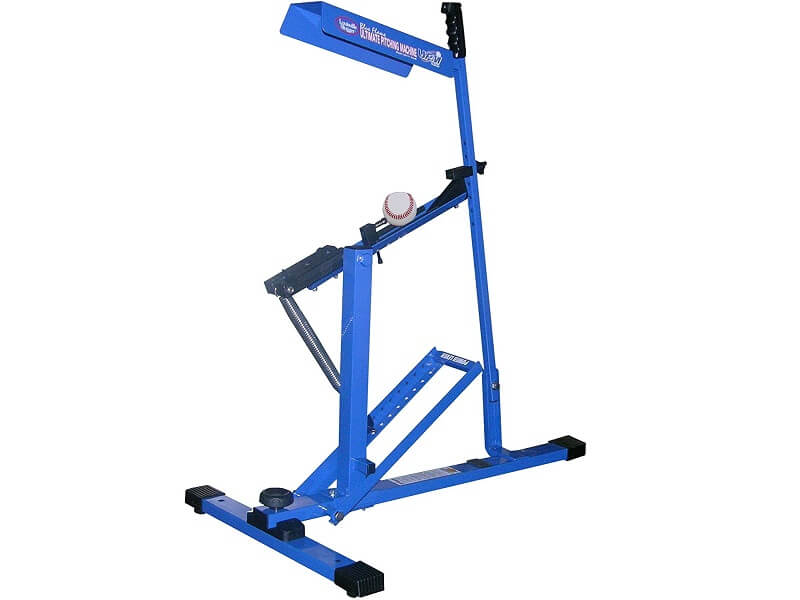 Here’s one for the coaches. There’s no full replacement for training with live pitching. But the hardest part of practicing with live pitching is…live pitching. Coaches are saddled with delivering perfect pitches during batting practice to ensure hitters can concentrate on repeating solid mechanics. But that’s not always easy. And it can take a toll on your arm/shoulder. Pitching machines can get wildly expensive, and it can get really hard to justify dropping that kind of coin when you’re just a volunteer coach for a youth team and want to make your life a little easier. This manual pitching machine is still a couple hundred bucks, but this will make just about every part of practice much easier, even beyond pitching BP. You can use this for fielding drills as well, both for fly balls and hard grounders. Louisville’s Ultimate Pitching Machine is lightweight and needs no electricity (or batteries). Throws practice balls up to 60 mph (regulation baseballs, fastpitch softballs up to 45mph).
Here’s one for the coaches. There’s no full replacement for training with live pitching. But the hardest part of practicing with live pitching is…live pitching. Coaches are saddled with delivering perfect pitches during batting practice to ensure hitters can concentrate on repeating solid mechanics. But that’s not always easy. And it can take a toll on your arm/shoulder. Pitching machines can get wildly expensive, and it can get really hard to justify dropping that kind of coin when you’re just a volunteer coach for a youth team and want to make your life a little easier. This manual pitching machine is still a couple hundred bucks, but this will make just about every part of practice much easier, even beyond pitching BP. You can use this for fielding drills as well, both for fly balls and hard grounders. Louisville’s Ultimate Pitching Machine is lightweight and needs no electricity (or batteries). Throws practice balls up to 60 mph (regulation baseballs, fastpitch softballs up to 45mph).
Summary, with pros and cons:
- Will make running practice much easier
- Create repeatable, live pitches to allow youth hitters to focus on what matters
- Won’t match the speed of more powerful pitching machines…
- …but it requires no electricity, and it won’t cost you a month’s mortgage
8. Blast Baseball Swing Analyzer
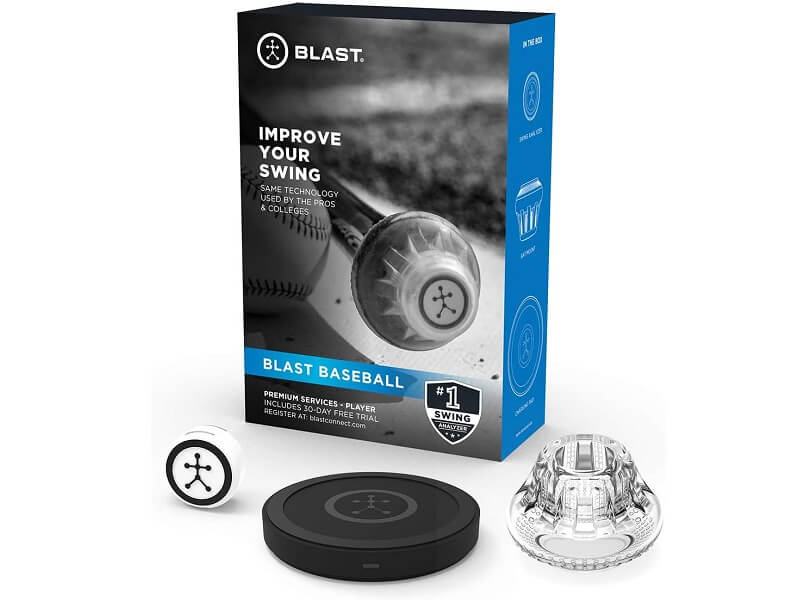 Track your toddler’s bat speed. You’ve never known—between mac & cheese and chicken nuggets, which makes your child stronger? Now you can measure it. Quantify your child’s talent with hard, actionable data. Of course this sort of tech is designed for advanced hitters who want to understand their swing down to the decimal point. The Blast analyzer comes with a sensor you stick on the knob of the bat and feeds you the good stuff like bat speed, attack angle, swing plane, and much more. There’s no light bulb moment like watching your own swing. You can take slow motion video of your swing and break it down frame-by-frame. If you’re a Fitbit junkie who loves tracking progress over time, this might just be your bag. But be ready to pony up a few bucks for it.
Track your toddler’s bat speed. You’ve never known—between mac & cheese and chicken nuggets, which makes your child stronger? Now you can measure it. Quantify your child’s talent with hard, actionable data. Of course this sort of tech is designed for advanced hitters who want to understand their swing down to the decimal point. The Blast analyzer comes with a sensor you stick on the knob of the bat and feeds you the good stuff like bat speed, attack angle, swing plane, and much more. There’s no light bulb moment like watching your own swing. You can take slow motion video of your swing and break it down frame-by-frame. If you’re a Fitbit junkie who loves tracking progress over time, this might just be your bag. But be ready to pony up a few bucks for it.
Summary, with pros and cons:
- Get all the data. Track your progress over time.
- You’ll need to pay for a monthly/annual subscription for full functionality.
- Slow-motion video capture is a step up from default phone video playback apps
- I made a joke above about using this for kids. But it might actually might be really useful for kids.
9. Dumbbells
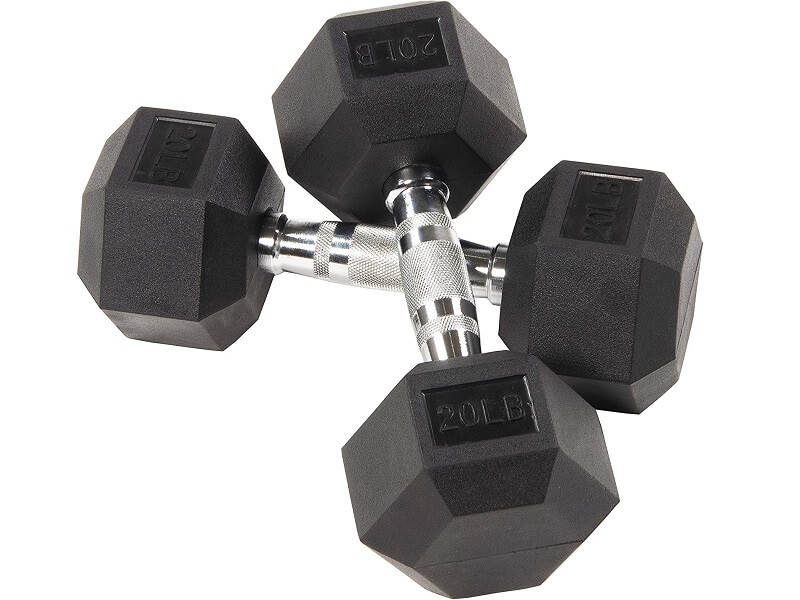 One great way to hit better is to hit it where they ain’t. Where they ain’t is over their head. By getting jacked, you can hit the baseball or softball much further—where they ain’t. Learning how to swing and perfecting the timing is the hard part. Once you’ve got something of a grip on that, you can reduce your margin for error by getting absolutely jacked. Pumping iron will get you closer to looking like Barry Bonds. Probably not all the way. Weights are likely not sufficient. But it’s a great start. We are obviously off the rails. But half-seriously: be really healthy. Feel really good. Take care of your body and it will take care of you.
One great way to hit better is to hit it where they ain’t. Where they ain’t is over their head. By getting jacked, you can hit the baseball or softball much further—where they ain’t. Learning how to swing and perfecting the timing is the hard part. Once you’ve got something of a grip on that, you can reduce your margin for error by getting absolutely jacked. Pumping iron will get you closer to looking like Barry Bonds. Probably not all the way. Weights are likely not sufficient. But it’s a great start. We are obviously off the rails. But half-seriously: be really healthy. Feel really good. Take care of your body and it will take care of you.
Summary, with pros and cons:
- These won’t actually help you hit a baseball
- But when you do hit the baseball, the baseball will go farther
- Very high return on your investment
- Benefits extend far outside the realm of baseball
10. Hand Speed Trainer
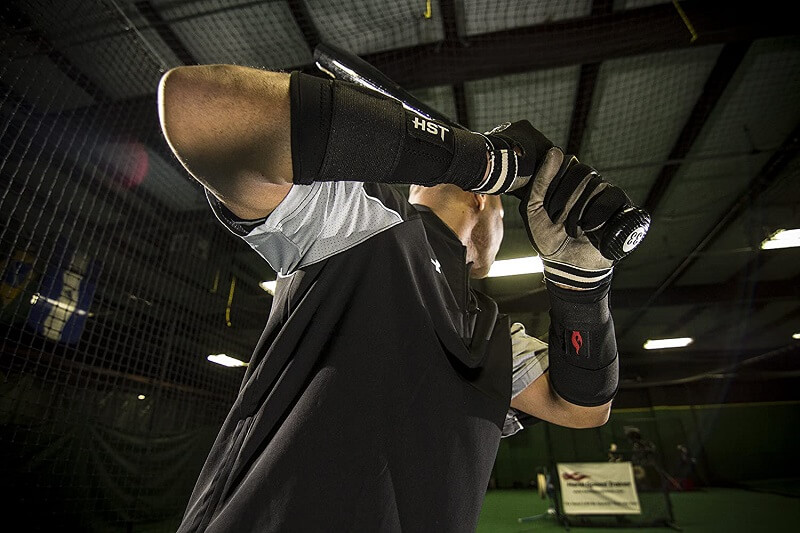 Keeping it simple here. This is more of a baseball-specific strength builder than the dumbells. These hand speed trainers help you build your baseball swinging muscles. Strap them on and take cuts with a little resistance. Train with a Hit-A-Way, tee, or other tool and build up the muscle you need to start generating more hand and bat speed. Resistance is actually adjustable, so you can increase your resistance as you get stronger.
Keeping it simple here. This is more of a baseball-specific strength builder than the dumbells. These hand speed trainers help you build your baseball swinging muscles. Strap them on and take cuts with a little resistance. Train with a Hit-A-Way, tee, or other tool and build up the muscle you need to start generating more hand and bat speed. Resistance is actually adjustable, so you can increase your resistance as you get stronger.
Summary, with pros and cons:
- Get more selectively jacked than you will with the dumbells
- Don’t take on too much at once – it’s humbling how small of a change can increase your chance of injury, particularly for you older readers
- Might be overkill for youth players who are already growing out of their t-shirts every day
11. Broom
 One great way to practice your mechanics outside of practice is when your mother asks you to beat the dust and dander out of a rug. The go-to tool for beating rugs is the ordinary household broom. Hang the rug over a railing and situate yourself into your comfortable batting stance. Focus your vision on a particular pattern on the rug and take a few cuts at full speed. Not only will you get meaningful reps of the first half of your swing, but you’ll be doing your mother a huge favor. You can even win some points by volunteering your services. And become a better hitter in the process.
One great way to practice your mechanics outside of practice is when your mother asks you to beat the dust and dander out of a rug. The go-to tool for beating rugs is the ordinary household broom. Hang the rug over a railing and situate yourself into your comfortable batting stance. Focus your vision on a particular pattern on the rug and take a few cuts at full speed. Not only will you get meaningful reps of the first half of your swing, but you’ll be doing your mother a huge favor. You can even win some points by volunteering your services. And become a better hitter in the process.
Summary, with pros and cons:
- Very cheap. And there’s a good chance you already have one of these.
- Dual use: use both as a batting trainer and terrorizer of small family pets
- Con: you might break it. But that’s OK, you can just tell mom it ran away. She will understand.
Thank you for reading.
I hope you can become a better hitter – or help your players become better hitters. There are way more tools out there that might help them, but these are the ones that stand out. Baseball is always fun. But it’s a lot more fun when you’re not struggling and searching for answers. Do what you can to become a better and have more fun.

The latest articles
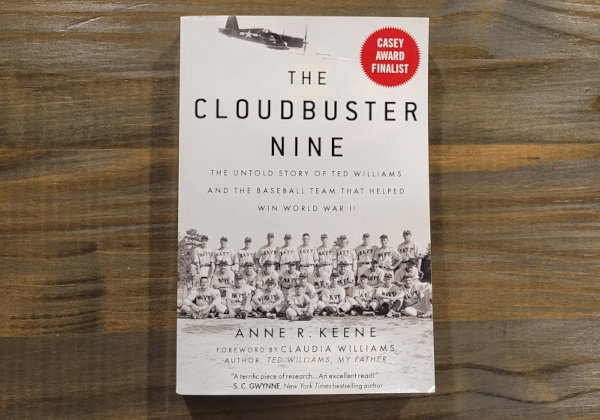
Book Review: The Cloudbuster Nine - by Anne R. Keene
by Fred Hofstetter on January 30, 2024Keene's comprehensive book tells several stories behind the V-5 Pre-Flight School in Chapel Hill, North Carolina: home to one of the rarest, greatest baseball teams in American history.

Book Review: The Glory of Their Times
by Fred Hofstetter on February 11, 2023There's good reason why The Glory of Their Times appears on every "best baseball book of all time" list you'll find anywhere.

Book Review: Future Value - Eric Longenhagen & Kiley McDaniel
by Fred Hofstetter on January 8, 2023Discover how amateur and pro baseball scouting is done, how departments are built, and how organizations find talent in Future Value.
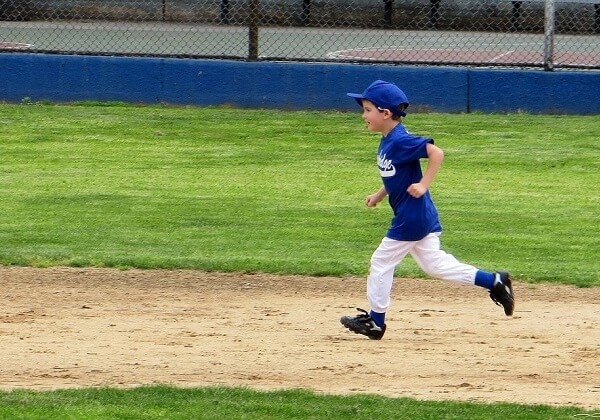
Baseball players wear hats because wearing a hat is correct
by Fred Hofstetter on April 9, 2022Practicality explains why baseball players may want to wear a billed cap. But why does every player always wear a hat? Because it’s the right thing to do.

